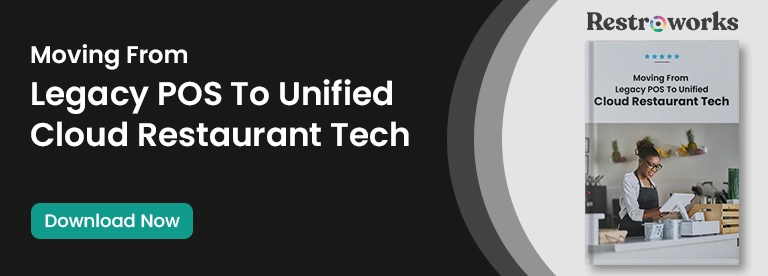
Think of this scenario: You’re managing your restaurant during a peak hour, and everything is running like clockwork. Orders are coming in, your kitchen is operating efficiently, and customers receive personalized service that keeps them returning. But behind the scenes, it’s not just your team making it happen—it’s a suite of cutting-edge technologies transforming your restaurant’s operations.
Now, picture having automated systems that handle everything from online orders to inventory tracking. A POS system that not only processes payments but also analyzes customer preferences, as well as innovative kitchen appliances that reduce energy consumption while optimizing food preparation. Think of voice-activated ordering systems that allow your customers to place their orders seamlessly or even robotic assistants helping to deliver food. This isn’t the distant future—it’s happening right now.
As the restaurant industry evolves, technology is critical in streamlining operations, enhancing customer experiences, and boosting profitability. In a world marked by rapid shifts in consumer behavior and increased competition, staying ahead means embracing these innovations.
In this blog, we’ll examine the top 10 restaurant tech innovations you need to know about and explore how they shape the future of dining.
Kitchen Display Systems
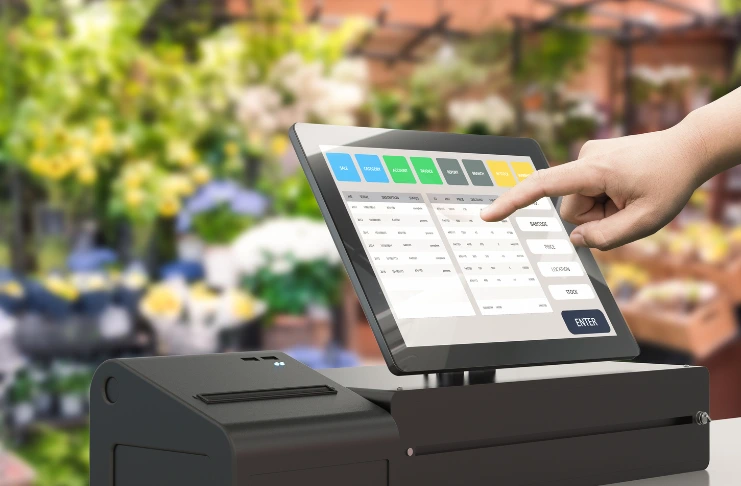
Introducing Kitchen Display Systems (KDS) – your kitchen’s ultimate transformation. KDS eliminates errors, prioritizes tasks, and enables real-time order information for your chefs. This cutting-edge technology replaces traditional paper tickets with digital displays, resulting in seamless communication between front-of-house and back-of-house staff, lightning-fast ticket times, flawless order accuracy, and maximum kitchen efficiency.
Priority Management: Like expert traffic controllers, KDS meticulously sorts orders by urgency, guiding chefs to focus their expertise where needed most.
Error Reduction: With digital displays, there is no room for mix-ups, guaranteeing dishes are prepared exactly as ordered, without any margin for error.
Smooth Communication: KDS acts as the authoritative voice of the kitchen, ensuring front-of-house and back-of-house teams work in perfect sync, leaving no room for misunderstandings.
Speedy Service: KDS keeps chefs in perfect rhythm, ensuring dishes reach tables at record speed, making it ideal for bustling rushes.
Efficiency Boost: Overall, KDS keeps the kitchen running smoothly, reducing bottlenecks and empowering chefs to handle whatever the rush hour brings with unwavering efficiency.
Self-Order Kiosks
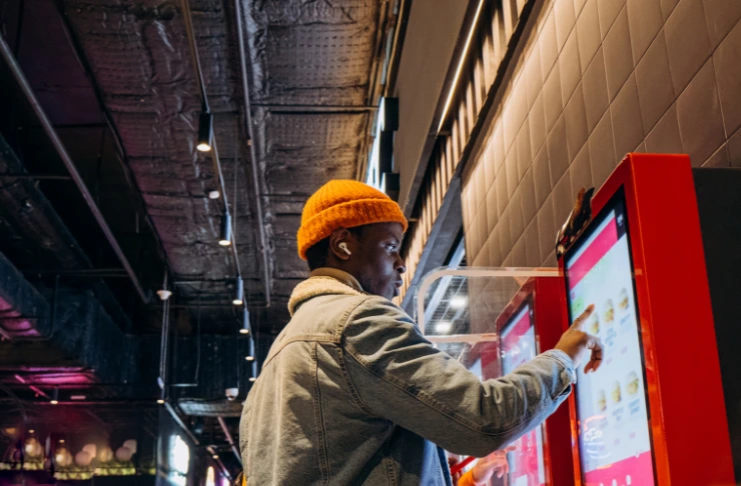
Self-order kiosks are entirely changing the customer service landscape in the food industry by providing a far more efficient, personalized, and satisfying dining experience. These kiosks allow customers to easily browse menus, customize their orders, and make payments at their own pace, fundamentally improving the customer experience while providing numerous operational benefits to the businesses implementing them.
Increased Order Accuracy: Self-service kiosks improve order accuracy by allowing customers to input their orders directly, reducing the possibility of human error and ensuring precise communication with the kitchen.
Enhanced Operational Efficiency: Kiosks improve operational efficiency by allowing staff to focus on food preparation and customer service rather than taking orders. This not only improves employee productivity but also conserves resources.
Higher Revenue and Upselling: Kiosks have demonstrated the ability to entice customers to spend more, resulting in orders placed via kiosks up to 30% higher in value than those taken by the staff. This is partly due to the kiosks’ practical upselling abilities for add-ons and specials.
Data Collection and Insights: Self-order kiosks can collect valuable data on customer preferences and ordering patterns, providing businesses with critical insights to guide menu adjustments, marketing strategies, and overall operational enhancements.
Artificial Intelligence – Transforming Operations
Artificial Intelligence (AI) is completely revolutionizing restaurant operations, empowering them to optimize efficiency, dramatically reduce waste, and consistently deliver top-notch culinary experiences. Through AI-powered inventory management systems and predictive analytics for menu planning, restaurants can swiftly adapt to changing consumer preferences and transform their kitchens entirely for unmatched efficiency, ensuring seamless culinary experiences. Here’s how AI is making it happen:
Inventory Management: AI optimizes ordering and minimizes waste by analyzing usage patterns and predicting ingredient shortages. AI analyzes extensive customer data to suggest menu items or promotions, guaranteeing enhanced satisfaction.
Predictive Maintenance: AI anticipates equipment maintenance needs, proactively preventing breakdowns and ensuring uninterrupted functionality.
Digital Menus
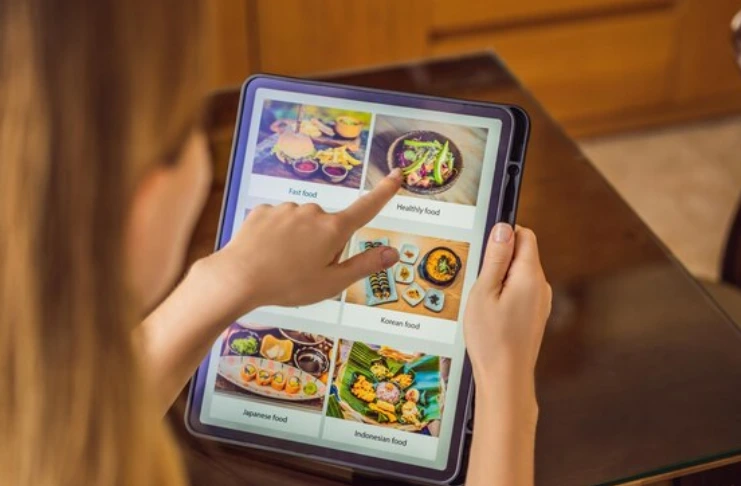
Digital menus are now a restaurant staple, captivating diners with captivating visuals, interactive content, and real-time updates. With the ability to exhibit menu items engagingly and adjust promotions on the fly, digital menus empower restaurants to create dynamic dining experiences that resonate with modern consumers.
Enhancing Customer Experience and Driving Sales: At the heart of the digital menu board revolution lies its ability to influence purchasing behavior and increase sales margins. These dynamic displays engage customers innovatively, capturing their attention and driving impulsive purchases.
Streamlining Operations and Maximizing Efficiency: Beyond their impact on sales, digital menu boards offer practical benefits for restaurant operations. Scalable and highly cost-effective, these systems enable centralized management and real-time updates across multiple locations. By eliminating the need for manual updates and minimizing downtime, digital menus improve operational efficiency and lower overhead costs. This cost-effectiveness ensures a high return on investment, making digital menu boards a viable and scalable solution for restaurant chains of all sizes.
Autonomous Delivery & Meal Preparation
Autonomous delivery and meal preparation are rapidly gaining traction in the restaurant industry, and these technologies are expected to grow further by 2024. Food ordering is still as popular as ever, and self-driving cars are poised to change everything. Driverless food delivery, while still in its early stages, has the potential to revolutionize the industry by saving money and providing convenience. Drones are also expected to take off in 2024, offering efficient, environmentally friendly delivery options for prepared meals, small packages, and convenience items.
In the kitchen, robots are proving to be equally transformative. McDonald’s is at the forefront of this innovation, testing bots for meal preparation and voice-activated ordering systems in select locations. These technologies simplify operations, lower labor costs, and increase efficiency.
From drone-powered deliveries to robotic kitchens, the future of dining is becoming more automated and accessible.
QR Codes
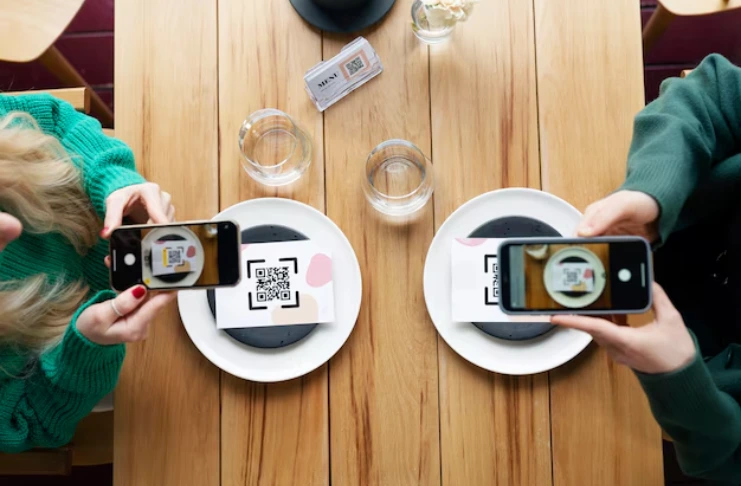
QR codes are gradually replacing restaurant menus. The global QR Code Labels market will reach $1.3 billion by 2026. In the current contactless era, auto-scanning barcodes enable customers to access online menus, order, and pay for their orders with a simple mobile phone scan. This technology, which does not require an app to be downloaded, plays a vital role in assisting restaurants with contact tracing and is currently mandatory in many parts of the world.
QR code technology, which provides numerous benefits to restaurants at a low cost, will remain important in 2024 and beyond.
Augmented Reality
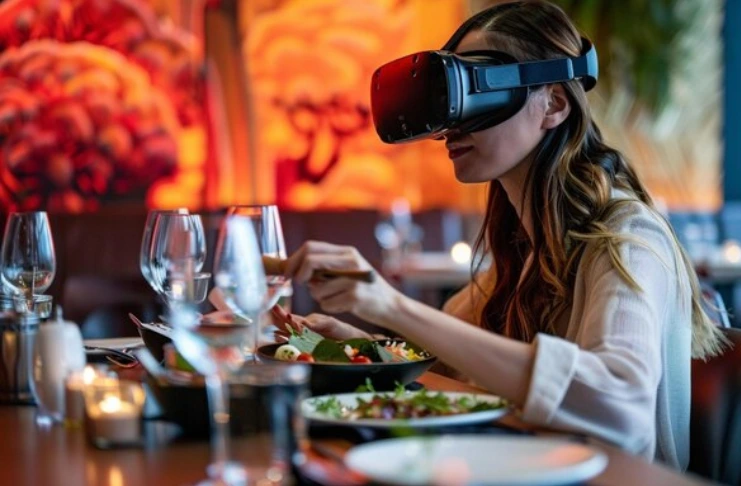
Discover the future of dining with augmented reality technology. Imagine having the power to see lifelike 3D images of every dish on the menu right from your smartphone. Not only that, but with a simple aim of your phone at a menu item, you can instantly access vital information such as nutrition details. This is just the beginning of how augmented reality can transform the dining experience.
AR awareness is increasing, and it is expected that by 2025, three-quarters of the global population will be using it frequently. By investing in this technology now, restaurateurs can stay ahead of the competition.
Real World Example:
Le Petit Chef offers a global, multi-sensory dining experience incorporating augmented reality (AR) technology. The restaurant uses AR to create the illusion of a tiny chef cooking directly on your plate, providing an engaging tableside experience for diners. Each AR animation is customized to the ordered dishes, adding a personalized and entertaining element to the dining experience.
Waste Management Software
Automated inventory management software enables restaurants to track food and beverage stock, anticipate quantities, and schedule reorders more efficiently and quickly. More importantly, incorporating this software into your work process can reduce food waste, which reportedly costs the hospitality industry $100 billion annually, not to mention the environmental cost.
Minimizing Waste: Software tracks food waste and pinpoints areas where reductions can be made, leading to significant cost savings for your restaurant and boosting overall profitability.
Sustainability: By reducing waste, your restaurant can actively contribute to sustainability efforts, appealing to environmentally conscious consumers and demonstrating your commitment to a greener future.
Robots

In the kitchen of the future, envision robots not as science fiction but as a groundbreaking reality. With automated food preparation and robotic delivery systems, restaurants are utilizing the power of robotics to transform the culinary industry. Robots’ precision, consistency, and efficiency make them essential culinary team members, allowing human chefs to concentrate on creativity and innovation.
Real-world Example:
Spyce boasts a completely autonomous kitchen, a marvel of modern technology. From the initial food preparation to the final plating, sophisticated robots handle every aspect of the culinary process. These mechanical chefs meticulously chop, stir-fry, and assemble dishes with precision and consistency, creating a truly unique dining experience.
Demand Forecasting
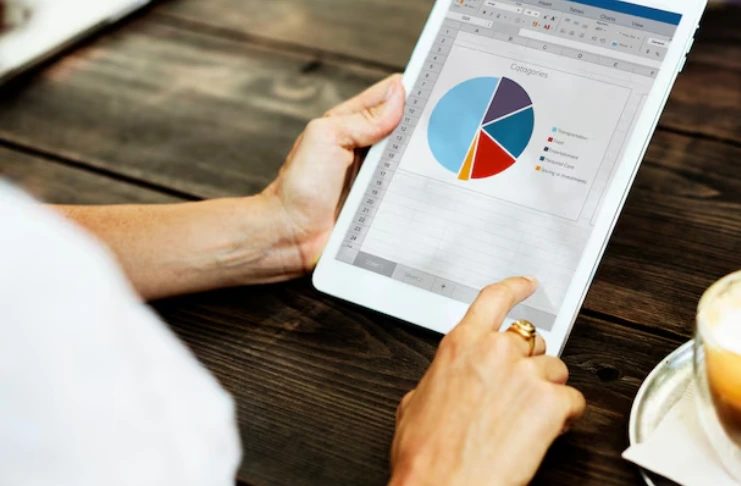
Demand forecasting tools harness the power of data analytics and enable restaurants to anticipate customer demand effectively. This empowers them to optimize inventory, staffing, and menu offerings, ensuring preparedness for peak times and minimizing the risks of overstocking or running out of popular items.
Inventory Optimization: Forecasting ensures restaurants maintain the correct stock levels, reducing wastage and costs.
Staffing Efficiency: Predictive analytics enable effective staff scheduling, preventing overstaffing or understaffing.
Menu Planning: Anticipating customer preferences allows restaurants to adjust menus to meet demand.
Real World Example:
Starbucks utilizes demand forecasting to predict customer traffic, optimize inventory and staffing levels, and contribute to the brand’s ability to uphold high service standards and product availability.
Final Thoughts
These innovations hint at a future where table ordering is faster, more personalized, and more seamless. Technologies such as kitchen display systems, self-order kiosks, AI-driven operations, digital menus, waste management software, QR codes, augmented reality, and demand forecasting are driving this transformation. Shorter wait times, spot-on recommendations, and a dining experience designed just for you—technology is changing how we dine.
New York City’s beloved Magnolia Bakery, famous for its cakes, cupcakes, and signature banana pudding, is embracing the future of food. In 2018, Magnolia Bakery took a step into the future by partnering with Kabaq, an NYC-based startup that uses 360° photographs to create 3D visualizations of food. Thanks to this collaboration, customers can now use augmented reality (AR) to project stunning wedding cakes onto tables, zooming in to admire every intricate detail before selecting.
But AR is just the beginning. Soon, fumbling for your wallet will be a thing of the past. With facial recognition, frictionless payments are set to revolutionize the industry. Picture this: you smile at a camera, and your bill is instantly settled—loyalty points included. This tech doesn’t just make paying easier; it also personalizes your experience, recalling your favorite dishes and offering personalized deals.
Take Tokyo’s Moonflower Sagaya Ginza, for example. This immersive dining experience combines a full-course meal with live art projections, creating a unique atmosphere beyond ‘cool’.
These innovations point towards a future where table ordering is quicker, more personalized, and more seamless. Shorter wait times, precise recommendations, and an experience crafted just for you—technology is reshaping the dining experience as we know it.
The future isn’t just about flashy tech, though. It’s about enhancing the human connection at the heart of dining. These innovations assist restaurant owners in creating unforgettable experiences, fostering customer loyalty, and staying competitive in a fast-evolving industry. The best bite? You’ve yet to experience it.

